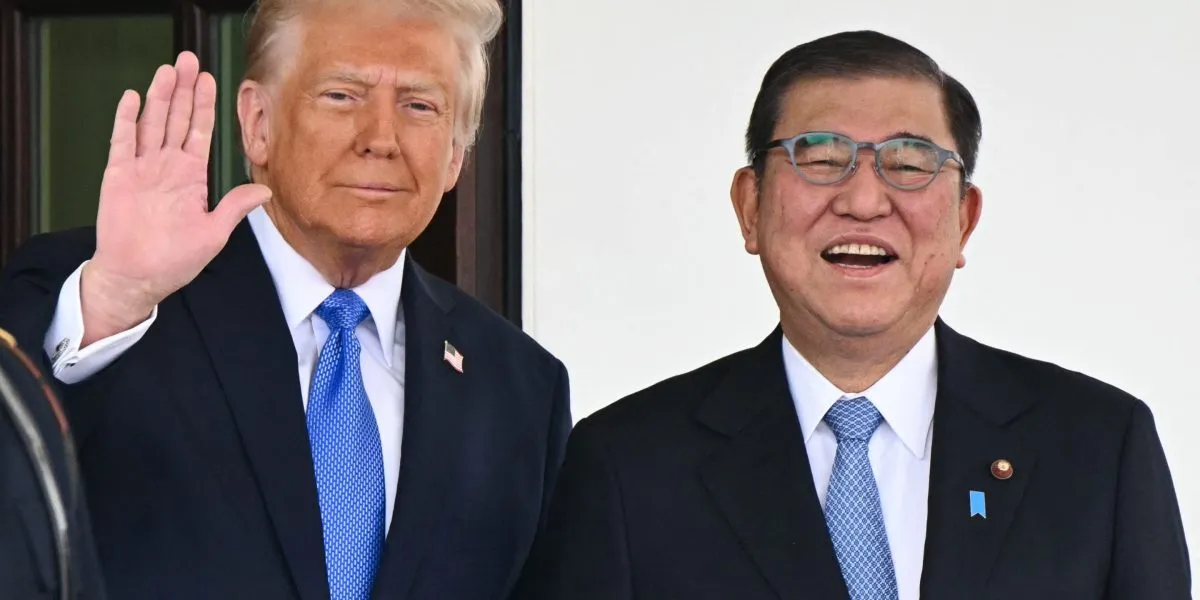
In a significant trade development, the White House has announced a new agreement with Japan that establishes a 15% tariff rate on Japanese goods. This deal also introduces a unique financial instrument, referred to as a “Japanese/USA investment vehicle,” which will be deployed under the direction of President Trump. This investment vehicle is set to target crucial sectors including energy infrastructure, semiconductors, critical minerals, pharmaceuticals, and shipbuilding, as outlined in an official fact sheet from the administration.
Under the terms of this agreement, the U.S. is expected to retain 90% of the profits generated from this investment. However, the Japanese government anticipates that profits will be divided based on what they describe as “the degree of contribution and risk taken by each party,” according to insights from the Financial Times. Treasury Secretary Scott Bessent emphasized that this innovative financing mechanism was instrumental in reaching an agreement on a lower tariff rate than the 25% rate that President Trump had previously threatened. In an interview with Bloomberg TV, Bessent stated, “They got the 15% rate because they were willing to provide this innovative financing mechanism.”
Analysts from Bank of America have noted that the Japan deal could serve as a blueprint for other auto-exporting countries, such as South Korea. These nations share similar trade characteristics with the U.S., including high current account surpluses, substantial U.S.-bound exports, and limited openness in domestic markets due to non-tariff measures. This alignment suggests that similar agreements could emerge in the future, potentially reshaping the global trade landscape.
Despite the optimistic projections, there are serious reservations regarding the realization of the promised $550 billion investment. Takahide Kiuchi, an executive economist at Nomura Research Institute and a former Bank of Japan policymaker, expressed skepticism about the binding nature of the investment pledge. Kiuchi noted that many Japanese companies may perceive the U.S. business environment as deteriorating due to existing tariffs and other factors. He stated, “At current exchange rates, labor costs in the U.S. are extremely high, providing little incentive for Japanese firms to expand investment there.”
Adding to the uncertainty, Brad Setser, a senior fellow at the Council on Foreign Relations, voiced doubts about the viability of the investment fund. He likened it to “vaporware,” suggesting that it may never come to fruition. Setser indicated that relying heavily on foreign investment to fund U.S. industrial strategies could lead to future complications. He remarked, “There is a lot less here than meets the eye,” emphasizing that the sectors earmarked for investment are already strategic for Japan, particularly in light of current supply-chain concerns.
A source familiar with the negotiations confirmed to Fortune that many specifics surrounding the $550 billion investment are still being ironed out, including the timeline and the establishment of an advisory board to oversee potential conflicts of interest. It has been clarified that this investment is not merely a pledge from Tokyo to purchase commodities but involves the Japanese government financing projects likely to occur in the private sector. For instance, if a chip manufacturing company plans to build a facility in the U.S., this investment vehicle could finance the construction and lease it under favorable terms, with a substantial portion of the revenue directed to the U.S. government.
This investment pledge coincides with ongoing legal challenges against Trump’s tariffs, which are currently under scrutiny in court. A hearing is scheduled to determine whether the president possesses the authority to impose such extensive duties under the International Emergency Economic Powers Act. As these legal battles unfold, countries may find it advantageous to propose substantial future investments in exchange for immediate tariff relief.
Analysts at Piper Sandler have concluded that Trump’s tariffs may be illegal and highlighted that the $550 billion Japanese investment lacks concrete specifics. They asserted, “Our trading partners and major multinationals know Trump’s tariffs are on shaky legal ground.” This uncertainty raises questions about the willingness of Japan and other nations to commit to large-scale investments in the U.S. in light of the potential for tariff changes.
The U.S.-Japan trade agreement and its accompanying investment vehicle present both opportunities and challenges. While the $550 billion pledge could potentially reshape investment in critical sectors, skepticism remains regarding its implementation and the long-term implications of Trump's tariffs. As discussions continue, the global trade environment may witness significant shifts, driven by these evolving dynamics.